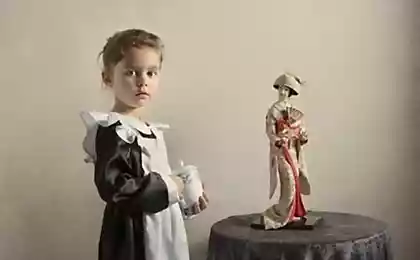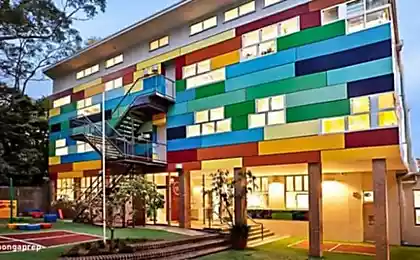158
How to teach a child verbal counting
Just the other day, I talked to my friend on the phone, and she in between told me how hard her daughter is given the multiplication table: “You can’t explain it logically, you need to memorize, and for us this is a real problem, even if you cry.”

It would seem that only a miracle can save parents from tears over the notebooks of young students. Fortunately, there are no less miracles in mathematics than in the lives of Harry Potter.

Thanks to mathematical secrets and tricks from "Site" Your child will be able to love the queen of sciences, and multiply and divide in his mind will become easier!
Oral billing receptions
The great Italian physicist, philosopher and astronomer Galileo Galilei once said: “Mathematics is the language in which the book of nature is written.” We hope that thanks to our examples, studying for your child will be an interesting and exciting activity!

It would seem that only a miracle can save parents from tears over the notebooks of young students. Fortunately, there are no less miracles in mathematics than in the lives of Harry Potter.

Thanks to mathematical secrets and tricks from "Site" Your child will be able to love the queen of sciences, and multiply and divide in his mind will become easier!
Oral billing receptions
- Instant multiplication by 11
Multiply in mind Any two-digit number by 11 is very easy, if you know the secret. Consider the following example: 63 x 11.
To solve it, you just need to add the numbers that make up the first number (6 + 3 = 9), and then place the nine between the six and the three. Here's our solution: 693.
If the sum of the digits is two digits, then the algorithm changes slightly. Let's say the example is 86 x 11. Although 8 + 6 = 14, the answer is not 8146. As before, the number 4 is placed between the numbers 8 and 6, but 1 is added to the number 8 to get the correct answer 946.
A good teacher once said, “If a child does not understand the simplest mathematical concepts, it does not mean that he is stupid.” We just haven't come up with a pretty clear explanation yet! Learn the rules of multiplication without much difficulty the child will help the Pythagoras table. No more information. Just numbers and logical thinking. - Multiplication of numbers consisting of units by themselves
Take this table into service, it will be easier to solve such examples with it.
- A simple way to multiply by 9
To multiply any number from 1 to 9 by 9, look at your hands. Rot your finger, which corresponds to the multiplied number (for example, 9×6 – rot the sixth finger), count your fingers to the bent finger, it will be dozens (in the case of 9×6 there are 5), then count your fingers after bent, it will be units (in our case there are 4). Answer 54.
To better remember the multiplication table by 9, this funny pattern will come in handy. As you have noticed, the numbers in the first column increase each time, and in the second column decrease by 1.
Agree that mathematics is a very interesting subject, and a kind of game, puzzle. And to master it better help fascinating books that we offer to our readers. - Multiplication of three-digit numbers by single digits
All you have to do is break the big problem into a few small ones. For example: 340 x 7. Break 340 into 300 and 40. Multiply 300 by 7 and 40 by 7 individually, and add the resulting numbers: 2100 + 280 = 2380. - Squaring two-digit numbers
If the number that needs to be squared is close to a number whose square is easy to recognize, then you can use the following technique: add the number itself to the square of the number per unit less and the number per unit less. For example: 31^2 = 30^2 + 31 + 30 = 961. - Squaring numbers ending in 5
This technique will help to quickly square a two-digit number, which ends with 5. All you have to do is multiply the first digit of a number by the number that is one more and put 25 at the end.
For example: 85 squared (85 x 85). Step 1. Multiply the first digit by the first digit increased by one: 8 (8 + 1) = 72. Step 2. Add to 25: it turns out 7225. - Division by 5
Dividing large numbers by 5 is very simple. You just need to multiply the number by 2 and move the comma. For example: 235/5. Multiply 235 by 2 (235 x 2 = 470). Transfer the comma to the left: 47.0 or just 47. - Complex multiplication
You want to know, How to Multiply Large Numbers in Your Mind? If one of them is even, you can simply regroup the numbers to make it easier to get the answer:
32 x 125 = 16 x 250 = 8 x 500 = 4 x 1000 = 4000.
- A simple method of finding a percentage of any number
To find a simple percentage of a number (e.g. 40% of 600), divide both numbers by 10 and multiply the results between them (4 x 60 = 240). - The magic of the number 1,089
Take any three-digit number whose digits are in decreasing order (e.g. 932 or 876). Now write it in reverse order and subtract it from the original number. Add the result of subtraction, written in reverse order. Take the number 932: 932 - 239 = 693. To the result, we add it in reverse order and get the magic number 1089: 693 + 396 = 1089.
Or the number 876: 876 - 678 = 198. To the result, we add its record in reverse order and get the same number 1089: 198 + 891 = 1089.
The great Italian physicist, philosopher and astronomer Galileo Galilei once said: “Mathematics is the language in which the book of nature is written.” We hope that thanks to our examples, studying for your child will be an interesting and exciting activity!































